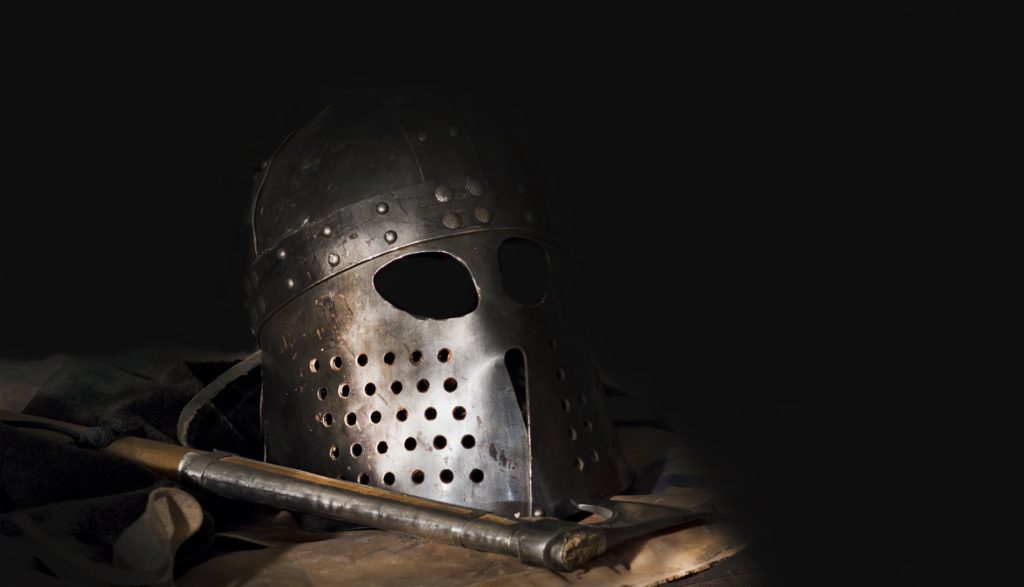
Several years ago I was with my family at Disney’s EPCOT park. One of the fascinating rides was Maelstrom, a ride that depicted Norway’s Viking days. Of course, the missiologist in me started thinking about Viking history apart from the grace of Christ. Then I recalled one of the first Protestant missions was the Danish-Halle Mission (founded 1705) that had significant Kingdom impact for many years. Then I started thinking about how the Scandinavian peoples went from following Norse beliefs to becoming one of the most influential gospel advancing people in the history of the Church.
And that took me on a journey to learn about Anskar of Corbie (801-865).
Yesterday (September 9), marked the birth of Anskar (801-865), a missionary who served in Denmark, Sweden, and northern areas of the Frankish empire. Much of what we know about him is from Bishop Rimbert’s 875 AD work Life of Anskar, Apostle of the North, 801-865. You may find this ancient biography HERE. I also want to recommend Edward L. Smither’s book Missionary Monks, which assisted me with this post.
Anskar was not the first to bring the Christian faith to the people of the North. Ebo, archibishop of Reims, had preached in Denmark, and traveling merchants, soldiers, and slaves also shared the gospel in Scandinavia.
In 826 AD, Danish King Harald Klak, his wife, and 400 courtiers were baptized in what was likely a political move. The Frankish King Louis the Pious encouraged Klak to recruit missionaries for Denmark that the people would become Christianized. One of the monks selected to go was Anskar.
Though others tried to stop him, given the extreme violence of the Viking raids throughout Europe, he accepted the invitation. His work began in northern Denmark with public preaching, establishing a school for children, and building a church facility for worship. Soon after his arrival, a co-worker died and the locals forced him to return home.
Later, King Bjorn of Sweden asked King Louis the Pious for missionaries to come to his country. Anskar was asked to go. The year was around 830 AD. On the way, his ship was raided by pirates, yet Anskar and his team continued on their journey. A monastery was established near modern Stockholm. While there, he conducted public preaching, started a church and school, baptized many people, and worked to free slaves.
In 832, King Louis the Pious appointed Anskar to lead a school and mission in Hamburg as a starting point to to reach the people of the North. According to Smither, “Generously supported by Louis the Pious, Anskar established a monastery, church, library, and school at Hamburg toward this end of sending missionaries to the North” (112). His work ended when Hamburg was attacked by Vikings, and he was forced to flee.
In 848, Bishop Nicolas of Rome made Anskar the archbishop of Bremen where he relaunched the Danish mission. After the work was established in Denmark, he attempted to obtain missionaries for Sweden where many churches were started.
Smither summarizes Anskar’s mission methods and strategy:
- He was influenced by dreams and visions.
- He embraced suffering as part of a theology of mission.
- He practiced spiritual disciplines while engaging with the communities.
- He used a team approach.
- His work often started with the invitation of political leaders.
- He established a mission base and training center for equipping and sending missionaries.
- He established schools and taught.
- He was involved in social justice.
- He cared for the poor and sick.
Smither writes:
“For most of the ninth century, European Christians were understandably fearful of their northern neighbors in Scandinavia and very few were thinking about engaging them missionally. Though King Harald’s initiative in 826 was more politically motivated, his initiative toward Louis the Pious and Anskar began a wave of Christian mission toward the Vikings. Hardship, patience, and endurance characterized Anskar’s ministry. Though Christianity did not gain broad acceptance in Scandinavia until the tenth century, the faithful ministry of Anskar and his colleagues surely helped pave the way to evangelizing this region” (118).
Scandinavia went from paganism to Christianity, including a vibrant missional thrust. However, today is another story when it comes to the gospel and many European countries. Where are the contemporary Anskars willing to go and proclaim a biblical gospel and plant multiplying churches in the face of great opposition?
